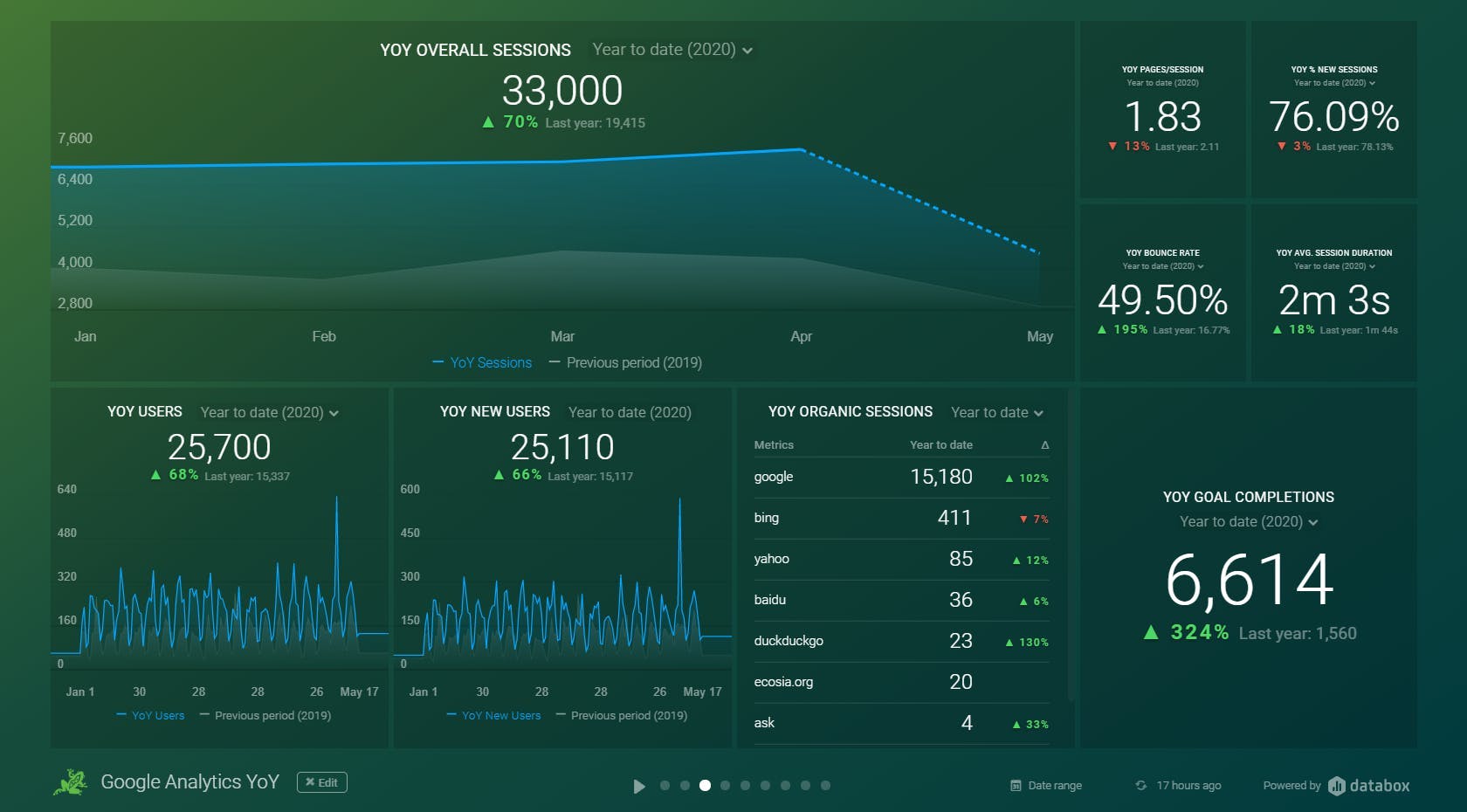You might not think of your marketing budget and reporting as intertwined, and you may even manage both deliverables separately. Marketing budgets are generally created on a quarterly or yearly basis, while reports are generated more frequently, like monthly or bi-monthly, for example.
Your marketing department or team may delegate budget development and reporting tasks to different people within your company and manage them independently. Nonetheless, you should consider both of these as parts of your company’s big picture.
To allocate your budget effectively, you need data. Alternately, the outcomes of your marketing spend should be reflected in your reporting data, so considering these pieces as intertwined is helpful.
Here, we’ll review our top 6 tips for creating your marketing budget and reporting, so you can set yourself up for marketing success.
Why is Having a Marketing Budget Important?
For your marketing plan to be successful, it hinges on your marketing budget. Your budget is, essentially, a roadmap for how your marketing department or team will support your company in meeting its goals. How and where you spend your marketing budget will reflect your overall strategy and your company’s priorities.
To get started planning your marketing budget, first determine how the goals of your company have changed. You’ll want to define your strategy and plan your budget according to the business plan. Your marketing budget should always be reflective of each of the goals your company has set, such as:
- Driving sales and revenue growth of a specific product or service
- Increasing company awareness and subject-matter expertise
- Gaining greater market share in a certain area of your business
How you allocate funds should directly correlate to the priority of each goal. High priority goals should have more of your marketing budget allotted to them.
Our Tips for Putting Together a Marketing Budget
Putting together a marketing budget might seem like an overwhelming and tedious task, but it doesn’t have to be that way. With a few helpful tips, you can streamline the creation of your budget, ensuring that it aligns with your overall business goals.
1. Familiarize Yourself With Your Buyer’s Journey
If you’re a marketing professional, you likely already know what the buyer’s journey involves. If you’re not familiar with it, the buyer’s journey are the steps your audience will take during their journey from becoming a potential prospect to an actual customer.
If you familiarize yourself with your buyer’s journey, you’ll have a much better understanding of how your audience perceives your marketing efforts—and how you can make adjustments to better appeal to your customers.
To help define your buyer’s journey, start by asking questions like:
- How do my prospects discover my products and services?
- What information do they need to have in order to become a customer?
- How many users visit my website each month?
- How many leads am I typically generating per month?
- How many of those leads convert to actual customers?
- What is my cost per lead and my customer acquisition cost?
Going through these questions should help you determine which marketing tactics may (and may not) work for your company. They should also help you determine how to modify your marketing objectives and where you should be focusing your marketing budget.
2. Analyze Previous Periods
Before you get started creating your marketing budget, it’s smart to look back at previous quarters or years and review the data. Doing this will allow you to identify any trends, determine what areas of your marketing plan have grown or declined, and any areas you need to start (or stop) investing in.
After all, data is what you should be using to inform your marketing decisions anyway, so why not allow it to inform your budget, too?
3. Ensure Your Budget Aligns With Your Marketing Goals
Your budget should be in line with your overall marketing goals. What you want to accomplish should be what determines how and where you spend your marketing dollars.
When you’re beginning to create your marketing budget, it’s important that you’re allocating your marketing spend on things that align with your current marketing goals that you’ve set according to your audience and where they are in their buyer’s journey. Depending on your audience, you could be spending money on marketing initiatives like:
- Paid search advertising to drive traffic to a specific product or service page on your website
- Sponsored posts on social media to increase your following
- Display ads to promote a new product, service, or resource
For pay-per-click campaigns, your cost is typically calculated based on the number of clicks or impressions your ad receives. These costs will change depending on the audience you’re targeting with each campaign. With this in mind, you’ll want to allocate more of your resources to campaigns that appeal to larger audiences and feature your most appealing offers.
4. Monitor Your Results and Calculate Your ROI
After you’ve put your marketing budget together, it’s time to start monitoring how your marketing campaigns are performing and whether or not they’re actually aligning with your goals.
To determine if your marketing budget has been successful, you can ask questions like:
- Are we over budget? Under?
- Do we need additional budget on top of what we already allocated?
- Are we on target to reach our goals?
- How are each of our channels performing?
- Have any unexpected projects cropped up?
Asking these questions will make it easier to ascertain whether your budget is working, or if it’s broken and needs to be reassessed.
Another way to assess the effectiveness of your budget is to measure your return on investment (ROI). If the money you’ve spent in one area provides a greater ROI than other areas, you should think about investing more of your spend in that area for your next budget. If your money didn’t provide a return, you should reexamine your budget and determine if those funds should be allocated elsewhere in the future.
Our Tips for Making the Most of Your Marketing Reporting
When it comes to marketing reports, there are many different types of reports and approaches you can take. Here are our two top tips for reporting on marketing data:
5. Highlight Your Most Valuable Data First
The most important tip we can provide for marketing reporting is to highlight the most valuable information first. This way, your stakeholders or audience can quickly determine what the most important points in the report are and what action items may come from those data points.
6. Use Visuals Wherever Possible
Visuals are a critical aspect of any marketing report. They cut down on the time needed to present your report and make it easier for your stakeholders and audience to digest the data. The type of visuals you use in your report should reflect the type of data you’re presenting.
If you’re not sure how to get started creating visuals, you can add Excel charts or screenshots from any reporting tools you use—like HubSpot’s Marketing Hub.
We use Databox to gather and organize detailed campaign metrics from tools like Google Analytics, Google Ads, HubSpot, and LinkedIn, so we can easily see how our efforts are performing.
Make the Most of Your Marketing Budget & Reporting
Making the most of your marketing budget and reporting doesn’t have to be overwhelming and tedious.
Follow the tips we’ve outlined here, and you’ll streamline your marketing budget and reporting—ensuring that your budget and any subsequent reporting are easy to understand, digest, and attain action items from.
If you need help creating your B2B marketing plan, budget, or reporting, let’s talk.



